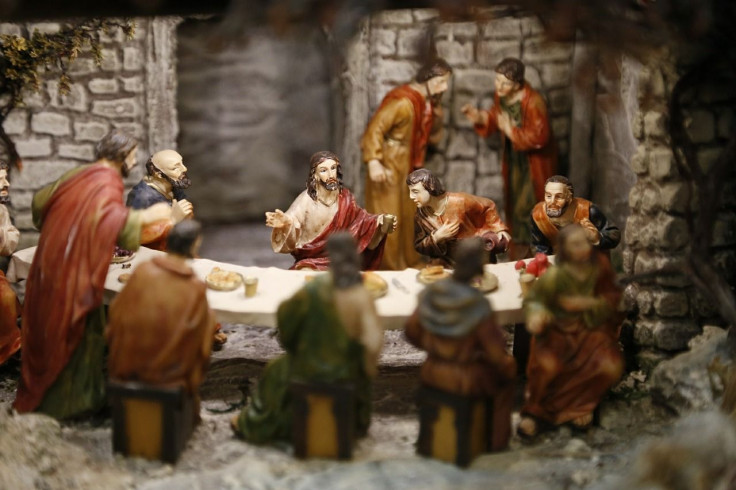Faith And Food: 5 Diets Rooted In Religion, From Buddha To Intermittent Fasting

Diets have been compared to religions: Some followers are strict adherents while others take a few liberties, and both frequently contain themes surrounding a cleanse or purification of some sort. So it’s no surprise that many diets were inspired by religions or mirror specific religions in one way or another.
Buddha’s Diet
Lots of people are familiar with the idea of rubbing a Buddha statue’s belly for good luck, but Buddha was actually in better shape than that. Tricycle, an educational nonprofit focused on Buddhism, makes note of that in discussing the book “Buddha’s Diet: The Ancient Art of Losing Weight Without Losing Your Mind,” a guide to eating healthy in the same way the Buddhist deity did. Co-author Dan Zigmond describes Buddha’s and monks’ method of eating only between dawn and noon, for example. When he spent time at a monastery in Thailand, he found that aside from the time rule, “The monks basically ate whatever they wanted, which was whatever the local people gave them on their begging rounds.”
Intermittent fasting
It became a fad a few years ago to skip certain meals or fast entirely on some days in order to lose weight. Intermittent fasting in some ways seems similar to the concept of Ramadan, the month-long Muslim holiday in which followers do not eat during daylight hours. The jury is still out on the secular diet, although advocates tout benefits as emotionally based as not having to give up eating tasty foods when not fasting, and as scientifically based as allowing the body to take out the trash — Scientific American says fasting “ramps up autophagy, a kind of garbage-disposal system in cells that gets rid of damaged molecules, including ones that have been previously tied to Alzheimer's, Parkinson's and other neurological diseases.”

The Hallelujah Diet
The Daily Meal calls this diet “a stricter version of veganism, with heavy supplementation, crazy amounts of juicing and recommended exercise.” The emphasis is on raw fruits and vegetables, with cooked plant-based foods allowed for dinner. The Hallelujah Diet has its roots in the Old Testament’s Book of Genesis, specifically the part where God gives Adam and Eve fruit-bearing trees to be their food.
Gluten-free
Celiac disease is an autoimmune condition that prohibits sufferers from consuming gluten, but some people without the disease or a gluten sensitivity believe that cutting out gluten — and thus grains like wheat, barley and rye — has health benefits for them as well. Grains are often the most basic building blocks of food, so a gluten-free diet also excludes, according to the Mayo Clinic, beer, breads and cookies, french fries, pastas, many sauces and dressings and a lot of soups, among other foods. In cutting out grains, a gluten-free diet mirrors the fasting practices of Daoist monks. Religion professor Shawn Arthur, author of “Eating Your Way to Immortality: Early Daoist Self-Cultivation Diets,” notes that among the rules is the concept of “bigu,” which is the avoidance of grain: rice, wheat, oats, millet and beans.
The Daniel Fast
This diet is based on the fasting practices of Daniel, the Christian prophet who is best known for his visions and for interpreting dreams. Prayer and spirituality is supposed to be closely tied to the 21-day partial fast that begins in the new year. Participants are only supposed to consume water, fruits, grains, nuts and vegetables.



























